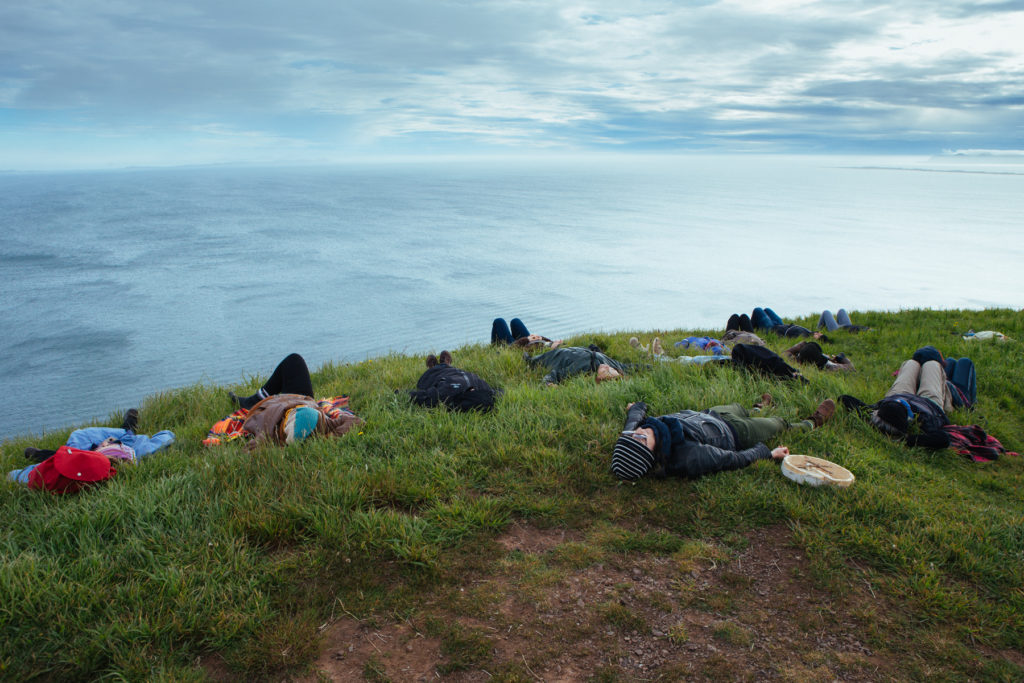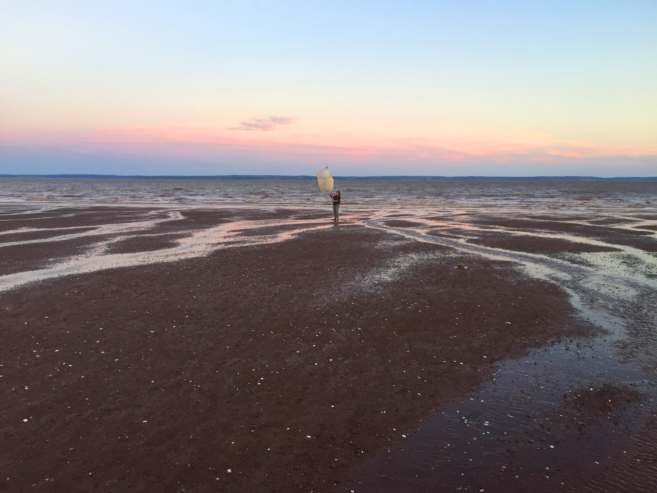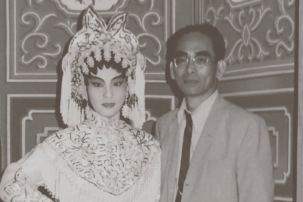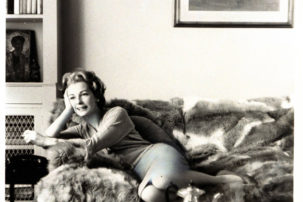One of my earliest memories is sitting on the front seat of an old truck with my grandmother. The seat was no longer in the truck, though—it belonged to a small hill beside my grandparents’ rural home.
It was early summer, and the birch trees around us were full as the wind blew gently through their leaves.
“What are the trees saying, Lindsay?” my grandmother asked.
I looked to the canopy with a great sense of curiosity as the sound floated above us. It was as if there were a poem in the sky, communicating of place, of ground, of atmosphere. It was as natural as breath— ungraspable yet entirely present.
“Shhhhhhh,” I replied, with a finger to my mouth, and we continued to listen.
I didn’t answer my grandmother’s question with what I thought the trees were saying. I simply echoed the sound I heard and, in doing so, offered myself to the experience in a vulnerable and humble way. My grandmother’s question was also an offering. She wasn’t seeking a translation of the trees into human language. The question reflected her openness, and seemed to come from the moment itself—inspiring a deepening of attention.
I sat in wonder, surrendering at the base of the trees, comfortably and unquestioningly living within listening. Without aim or expectation, I leaned against one of the birches and sensed the movement in the wind through my whole body. I began to feel like the tree: connected to the earth, and to the sky. Rooted freedom. I looked up, and my listening extended beyond mere perception of sound to a sense of shared beingness. I could hear the trees listening, the wind listening, my grandmother listening and even the listening itself.
My shhhhhhh was in honour of this deep resonance, facilitating its continuation while also transmitting the intent to quiet, to witness. In this deepening, I could hear the union of all I perceived, and I could see the dance, the interaction between things, as a celebration of this love.
Shhhhhhh is the song of my awakening to listening.
Hearing, the physiological act of perceiving sound, happens within listening, as do all other sensorial experiences. These perceptions are a pathway to listening, but they are not the listening itself. Listening is the space where all phenomena meet. It is the conscious attention we offer to life.
If one were to ask, “Was it the tree or the wind making the sound?” you couldn’t actually say one or the other—the sound is the relationship, the interaction. Through vibration, the tree and wind are receptive to each other. Their seeming separateness dissolves into a place of co-creation, revealing a shared voice. In the play and exchange, phenomena and form fall away, and the resonance that remains is evidence of their listening. This resonance takes us to a place of beauty and points to our interbeing.
Had I tried to answer my grandmother’s question by interpreting what the trees were saying, the moment would have been mediated through that goal. The potential of communication and relationship would be lost, and I’d just be sitting on top of the actual resonance. Because what was truly happening, the true understanding, was the sense of belonging and presence. I wasn’t an observer, separate in my perception, but a listener who was part of the great listening.
To truly listen is a surrender and an allowance to receive and be received. When our expectations and aims fall away, the heart of understanding can be experienced. Separation dissolves, and listening is revealed as a shared ground of awareness. We encounter things as they are and become nourished in the meaningfulness of connection.
An unexpected moment of awe and beauty, where one is humbled into presence and a sense of mystery, takes us right to listening. When we are struck by the way light reflects off sweetgrass, or the way the loon’s call pierces the foggy dusk air, we let go of being something, of interpreting or translating, to become nothing—to just be in the wondering, to realize we are connected to everything. Whether they last for a few seconds or much longer, these encounters show that listening is natural, fully present and available to us always. It is who we are.
This is medicine the world needs right now.
When I’m with the trees now, my grandmother’s question is also with me, echoing in my life as an open call. Every time I hear her echo, my only response is to deepen awareness and hear the shared listening. In this space, I can simply witness what is unfolding in the moment. My nervous system calms, and the more subtle, quiet aspects of being reveal themselves: my breathing; a slug crawling on the tree; a sense of growth over time; the almost inaudible movement of birchbark; the waterborne vibration of roots; a tiny caterpillar slowly making its way back up to the branches after sending itself down into the wind. Our strength is in the subtle, because it’s here that we become aware of the sacred bond inherent in our being.
In a world where much is asking for our attention, can we simply wonder at the wisdom in a quiet, vulnerable emergence? Can we be with the unfolding of our listening? How deep into unknowing can we go to listen?
As I reflect on my path and responsibilities as a human being, particularly when it comes to my relationship with the natural world, I am taken to listening. I remember sitting under the trees with my grandmother as a child, and how my openness, wonder and receptivity led to a profound experience of belonging. This is medicine the world needs right now.
Colonial trauma, and the accompanying noise and fragmentation, disrupts connection to ourselves, the land and each other. Listening can guide us in embodying practices of care, respect and reciprocity by remembering what we share: our presence.
We experience profound responsibility and medicine when we witness and honour our relations through listening. Indigenous Peoples have practised this art of deep observation for thousands of years. Here, truth is found in relation. Survival in sustaining kinship. Love in renewal. And life is an offering to and expression of the beauty experienced in reciprocity.
Considering all the ecological and social injustices at present, there is so much to do. But there’s also space for not doing—for just listening. For finding rest at the base of a tree. For floating in the ocean. For practising gratitude. For offering oneself through humble attention. For expanding awareness to relationship. For learning from other intelligences. For letting the natural world know us, as we get to know it. For awe. For allowing ourselves to become poems, imprinted by the breath of our noticing and opened to the call of wonder. So much is created, transformed and healed here as we acknowledge our interdependence and the gifts that everything brings. Our movements then echo the songs of a sacred bond, and our lives steward the deep ecology of connection.
The natural world is a teacher who continuously invites us into that which is indescribable yet intimately heard. The tops of trees, the voice of a bird, water flowing on the ground. These resonant places initially act as mirrors, where we encounter ourselves simply through seeing and being witnessed by that which is fully being. Yet another step reveals itself. A journey into noticing how all things meet here. In these portals of discovery, we find ourselves, then lose ourselves—embraced by our belonging to the earth and to each other. Nothing to be added, subtracted or obtained. Just a welcome into listening.

 Lindsay Dawn Dobbin, Listening As Wayfinding, 2016. Participatory performance at Menagoesenog/Îles de la Madeleine. Photo Nigel Quinn.
Lindsay Dawn Dobbin, Listening As Wayfinding, 2016. Participatory performance at Menagoesenog/Îles de la Madeleine. Photo Nigel Quinn.






